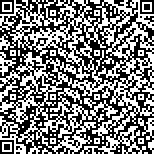| 摘要: |
| 在健康社区的视角下,公平的健康设
施配置对于保障居民健康公平具有重要意义。
伴随着城市高速发展,老旧社区的设施规划与
居民新时代需求产生了冲突,因此所面临的问题
较为突出。本研究旨在探索健康社区视角下的
老旧社区公共设施布局评价体系,并探讨设施
布局提升路径。以武汉望丰社区为实证范围,
通过API接口采集当地公共设施POI、设施规
模和人口数据,构建地图要素矢量数据集,以
ArcGIS为工具运用改进后的两步移动搜索法从
设施可达性和服务供给两个方面评估老旧小区
不同类型公共服务设施布局情况,结果显示该
区域存在设施可达性不佳和供给失衡的问题。
接着基于评价结果提出“功能差异归类—潜在
空间挖掘—适用性嵌入”的优化路径,并对重
新规划后的设施开展二次评价,结果显示,优化
策略对该社区的公共设施可达性和服务供给提
升作用显著。 |
| 关键词: 住区规划 健康社区 老旧社区 POI ArcGIS |
| DOI:10.13791/j.cnki.hsfwest.20240610 |
| 分类号: |
| 基金项目:湖北省建设科技计划项目(20222198-123) |
|
| Evaluation of the layout of old community public facilities from the perspective of healthycommunity: Taking Wangfeng Community in Wuhan as an example |
|
XU Hong,LI Tianyue,WANG Yi
|
| Abstract: |
| From the perspective of a healthy community, equitable distribution of health facilities is
crucial for ensuring fairness in residents’ health outcomes. The rapid urban development and conflicting
needs between outdated community infrastructure and the demands of contemporary residents
highlight pressing issues. Current academic discourse and regulatory standards primarily focus on
macro-level controls and guidance, leaving significant exploration space on how to effectively apply
concepts like healthy cities or healthy communities in practical assessments. Additionally, there is a
lack of comprehensive measures at the community scale to finely assess the layout of facilities in older
neighborhoods. In the context of healthy communities, there remains no established consensus on the
guiding principles and methods to optimize the layout of health facilities, especially in older residential
areas facing greater challenges compared to newly planned ones.
Reasonable facility planning is one of the essential components in constructing a healthy
community, and discussions on health facilities cannot be divorced from this planning. This paper
first identifies which types of facilities fall within the scope of discussion. Health inequality is
defined as systematic differences in health status among different social groups, emphasizing the
connection between facility equity and resident health. The construction of a healthy community is
inseparable from a healthy medical service system, and medical and health facilities are important
parts of urban public service facilities. In the context of aging, good community service facilities
for the elderly are necessary to support the urban pension system and build a healthy pension model.
Community environmental sanitation service facilities are an important foundation to ensure comfort
and convenience and are conducive to creating a clean and hygienic community environment. In
addition to community medical facilities, health facilities, and social welfare facilities that ensure
resident health, health facilities also include other facilities that promote the physical and mental
health of community residents, such as cultural and sports facilities, and educational service
facilities. Educational service facilities such as primary and secondary schools, kindergartens, etc.
are important facilities to promote the healthy physical and mental development of students and
young children. Promoting national fitness is one of the important components of realizing healthy
cities and healthy communities, so a more equitable layout of cultural and sports facilities is of great
significance for building healthy communities. The rational planning of these facilities has a direct
impact on residents’ quality of life.
The purpose of this study is to explore an evaluation system for public facility layout in aging
communities from the perspective of a healthy community and to discuss pathways for improving
facility layout. Firstly, this paper selects the Wangfeng Community in Wuhan as the scope of
empirical research. This area is one of the key regions for local government renovation of aging
neighborhoods. The residents in this area are primarily middle-aged and elderly, closely connected
to healthcare facilities in their daily lives, with a high demand for walkable accessibility to facilities
among the elderly. Public facility Points of Interest (POI), facility scales, and population dataare collected and filtered using API interfaces to construct a vector dataset of map elements. Based on the “Community Life Circle Planning Technical
Guidelines” as a standard, thresholds for various types of facilities are selected and specified. An improved two-step floating catchment area (2SFCA) method
is employed to analyze the accessibility of existing public service facilities. Subsequently, the matching between community population distribution and
the capacity of each facility to serve the population is calculated to further evaluate facility supply capabilities. The evaluation results indicate inadequate
accessibility and imbalanced supply of facilities in the studied area.
In contrast to new residential areas, the renovation of facilities in older neighborhoods emphasizes the macro-level control of existing space and
resources to enhance public facility distribution for a more rational layout. Subsequently, based on evaluation results, an optimization pathway termed
“classification of functional differences-exploration of latent spaces-embedding of applicability” is proposed. Firstly, for facilities with different functions,
the space use area varies due to the different needs of their users and relevant regulations. Therefore, the differences in the space requirements of different
types of facilities can be clarified through the classification of facility functions. Secondly, due to the early planning of old communities, there is usually
limited space for new construction. It is necessary to fully tap the potential space and realize space activation through renewal, sharing, and supplementation.
Thirdly, on the basis of clarifying the above two points, the facilities should be allocated according to local conditions based on the differences in demand
and disposable space. Following this, a secondary evaluation of the reorganized facilities shows that the optimization strategies significantly enhance
accessibility and service supply in the community.
An attempt to investigate the relationship between traditional settlements and rising concepts is made through the study of old neighborhoods. This
study presents a comprehensive evaluation of accessibility and supply capacity from the standpoint of healthy community, and it quantifies the accessibility
of health services and the population that can be covered. In addition to offering helpful ideas for developing a more wholesome pattern of urban community
amenities and sustainable urban development, the research framework of this paper offers some support for the public service facility evaluation system in
older residential districts. |
| Key words: residential area planning healthy community old community POI ArcGIS |


